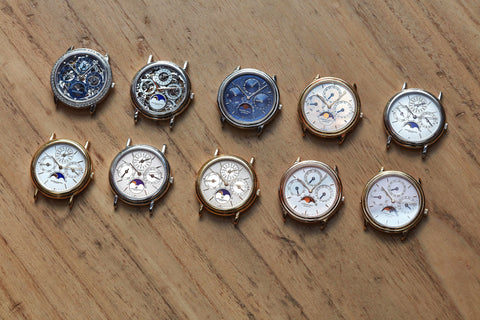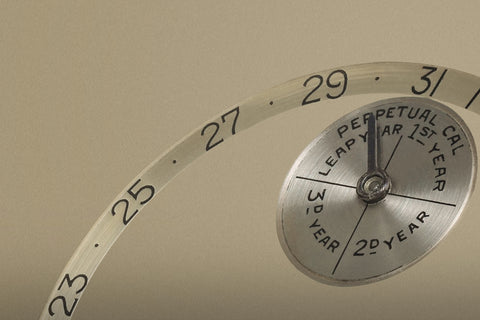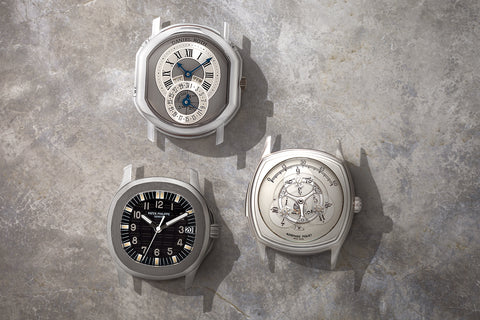One year after their initial reference 43031, Vacheron Constantin introduced the reference 43032, distinguished by its skeletonised design. The manufacture estimates that around 150 skeletonised watches were produced in platinum, with 130 of those bearing white subdials and only 20 featuring blue subdials. A handful of pieces were also produced with diamonds on the bezel or dial.
With its ornate, skeletonised design, this Vacheron Constantin reference 43032 is an intricately made piece that lays the secrets of watchmaking bare. From the dial to the open caseback, the watch creates space for the interplay of light and metal, providing a captivating visual depth. The exposed mechanics display an impressive level of hand-finishing, with vertical brushing, mirror polish and bevelling visible on most of the surfaces. Many of the components, both at the front and back, feature a traditional hand-engraving in a floral pattern, which is subtle and refined.
There are four sub-dials present, as is traditional with the style of perpetual calendars, noting day, month, and date, as well as moonphase. This variant possesses white sub-dials, with a plain black font for the indications. Meanwhile, the moonphase found on this reference 43032 is made from lapis lazuli, a deep blue metamorphic rock that adds a subtle contrast against the white subdials. The reference 43032 makes use of a 48-month sub-dial, allowing the wearer to track what stage of the four-year cycle they’re in, and allows for more precision in tracking the changing years over a longer period.
This Vacheron Constantin 43032 is powered by the 1120QP, an illustrious movement introduced in 1983 that built on the high-quality JLC 920 ébauche. With the help of famed Swiss complications specialist, Dubois Dépraz, the perpetual calendar module remains in use today, with the most recent perpetual calendars produced by the brand still running on this movement.




























































































































































































































